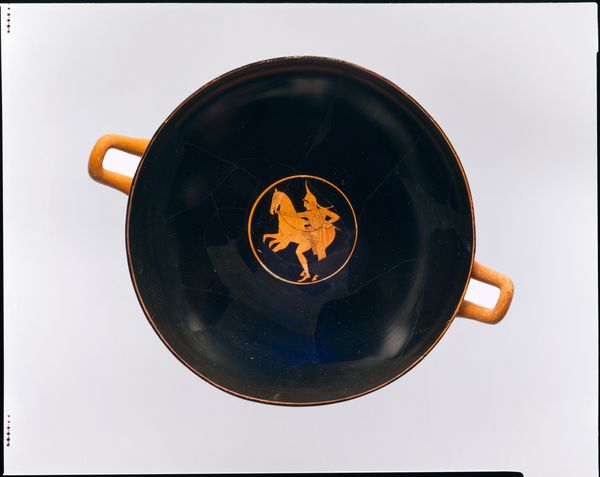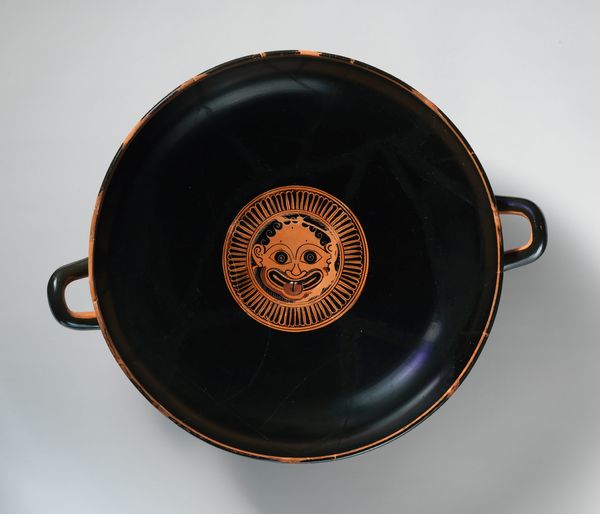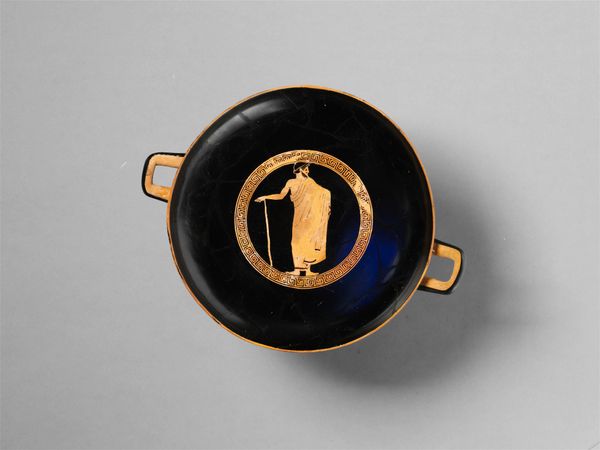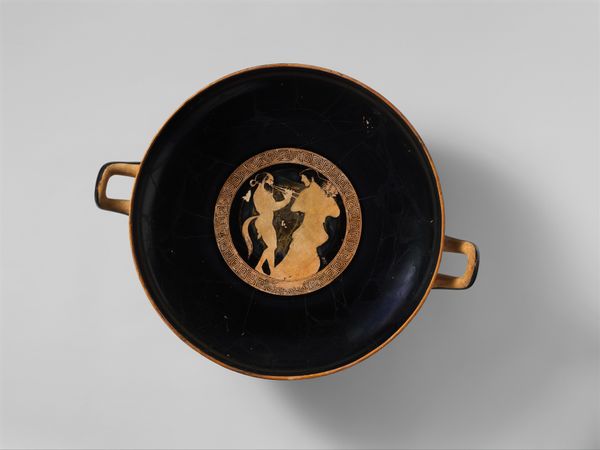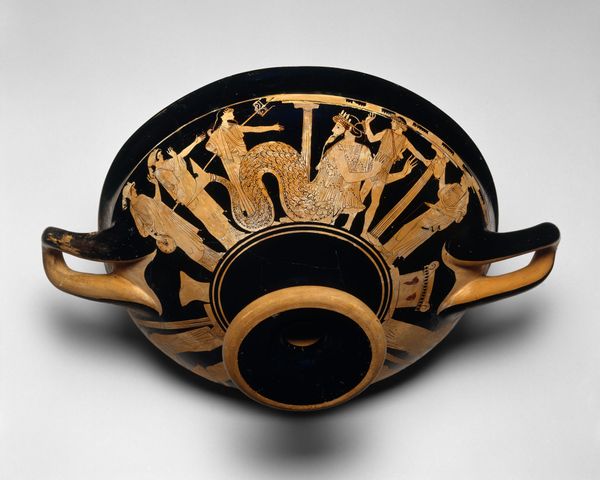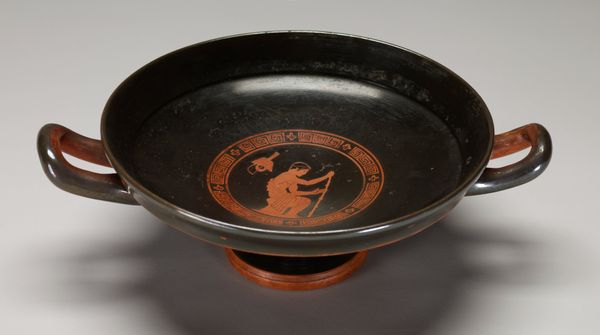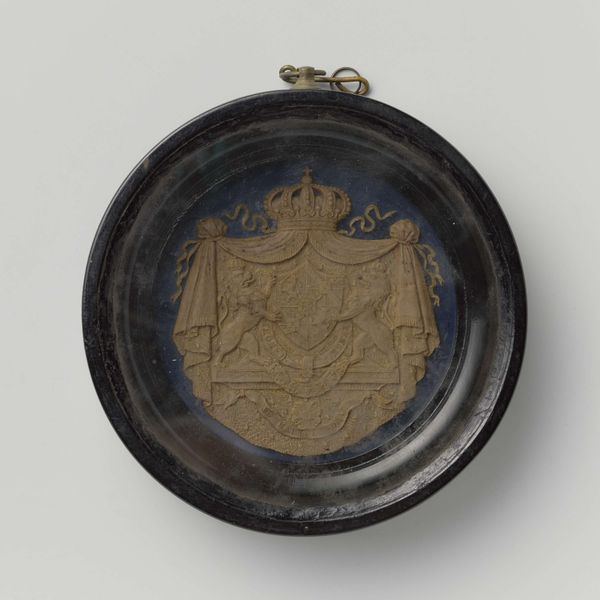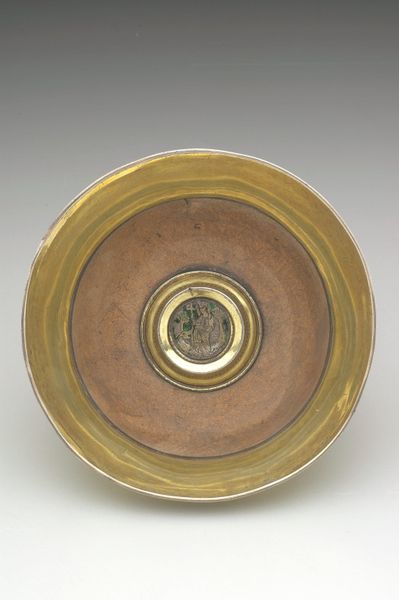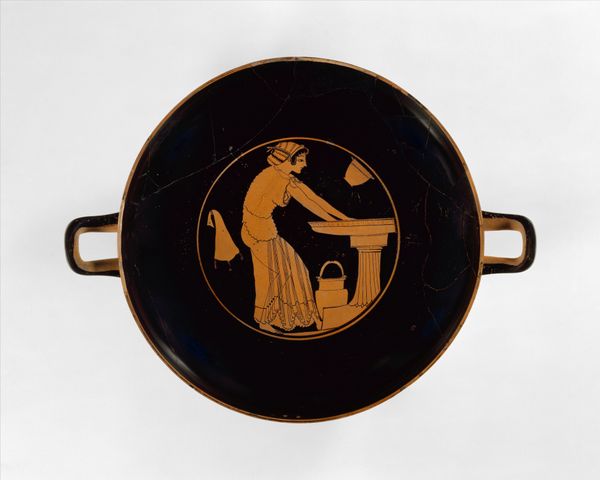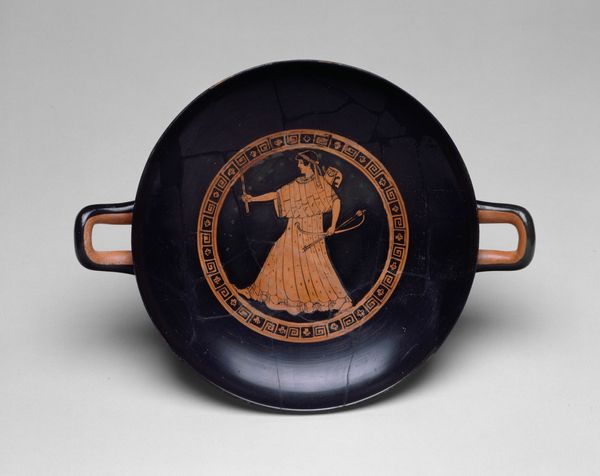
ceramic
#
greek-and-roman-art
#
ceramic
#
figuration
#
geometric
#
ancient-mediterranean
Dimensions: H. 5 1/2 in. (14 cm) diameter 10 1/2 in. (26.7 cm)
Copyright: Public Domain
Editor: Here we have a terracotta kylix, a Siana cup, dating back to 560 BC. It's currently held at the Metropolitan Museum of Art. The craftsmanship is stunning. I am fascinated by how simple, geometric forms work to create the artwork. What stands out to you in this piece? Curator: The stark contrast between the black glaze and the reserved areas of terracotta creates a visually arresting composition. Note how the circular tondo at the cup’s center establishes a focal point. Observe the controlled precision in delineating the figures with the black glaze, creating defined forms against the orange background. Editor: Is the central composition the most critical part? What about the negative space? Curator: Indeed. Notice the way the dark field that comprises most of the vessel directs attention inwards, intensifying the impact of the central scene. The handles provide visual anchors, reinforcing the symmetrical balance. The linearity, rendered through ceramic, conveys form with economy and grace. How do the shapes work together in the cup design? Editor: I appreciate the circular element more with the context you have added. The narrative is encased within a circle which is held by two symmetric, linear handles on each side. I find this unique compared to sculptures that break into the space of the viewer. Curator: Precisely. Considering this formal interplay allows us to move towards an understanding of its enduring appeal. This close visual analysis has been revealing, and hopefully helps to unpack the object in more detail.
Comments
No comments
Be the first to comment and join the conversation on the ultimate creative platform.
